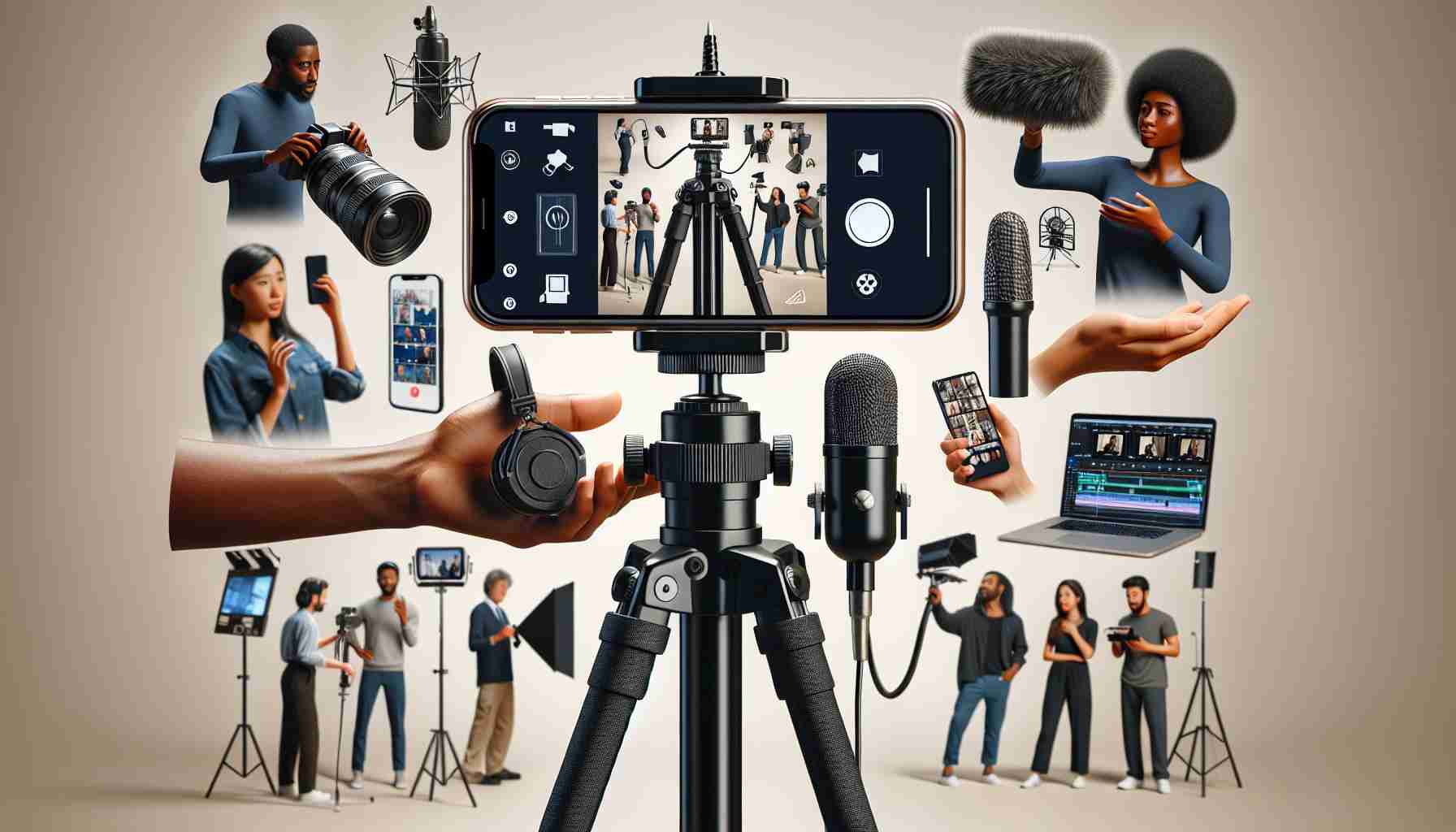Optimal Lighting for Crisp Videos
While smartphone sensors struggle in low-light conditions, achieving excellent video quality is still achievable with the right lighting setup. Embrace natural light whenever possible, but when shooting indoors or at night, artificial lighting is essential. Create a consistent lighting scheme by either using ample daylight from windows by opening curtains or employing uniform artificial lighting sources like Neewer Dimmable Bi-Color Ultra-Thin 192 LED panels.
Capture Steadily and Horizontally
For professional-looking videos, always shoot in landscape mode to maximize the frame. Maintain a steady hand while shooting to avoid shaky footage. Consider investing in accessories like the Ulanzi Smartphone Video Rig or a stabilizer for smoother results.
High-Quality Audio Enhances Viewer Experience
Incorporate an external microphone, such as the directional Rode VideoMic Go II or the lapel-type Hollyland Lark M1, for pristine sound quality. Select the microphone type based on your filming needs, ensuring clear audio even in challenging outdoor conditions with wind protection.
Focus Techniques for Sharp Images
Manually control the focus on your smartphone to ensure the subject remains sharp throughout the recording. Practice tracking moving subjects for improved focus accuracy using on-screen touch controls or dedicated stabilizing tools for enhanced results.
Implement the Golden Ratio Composition
Follow the golden ratio rule to add visual interest to your videos by positioning the main subject off-center. Utilize grid features on smartphones to align elements within the frame according to this principle, enhancing the overall composition. Adapt the technique based on the subject’s movement and scene dynamics for captivating video compositions.
Additional Relevant Facts:
1. **Slow Motion and Time-lapse**: Smartphone cameras often offer capabilities for capturing slow-motion and time-lapse videos, allowing for creative effects and storytelling in video production.
2. **Color Correction and Grading**: Post-production editing techniques such as color correction and grading can greatly enhance the visual quality and overall look of smartphone-shot videos by adjusting colors, contrasts, and tones.
3. **Use of External Lenses**: Some smartphone videographers opt to use external lenses to expand the range of creative possibilities, such as wide-angle or macro lenses, to achieve different perspectives and effects.
4. **Live Streaming**: With advancements in technology, live streaming directly from smartphones has become increasingly popular for engaging with audiences in real-time and creating interactive video content.
Key Questions:
1. **How important is post-processing in smartphone video production for achieving high-quality results?**
2. **What are the best practices for maximizing audio quality when recording videos with a smartphone?**
3. **How can videographers effectively utilize different camera settings on smartphones to enhance the visual appeal of their videos?**
Advantages:
1. **Convenience**: Smartphone video production offers convenience, allowing creators to capture footage anytime, anywhere without the need for bulky equipment.
2. **Accessibility**: With smartphones being ubiquitous, video production becomes more accessible to a wider range of people, democratizing the filmmaking process.
3. **Cost-Effective**: Compared to traditional camera setups, smartphone video production is often more cost-effective, as it eliminates the need for expensive camera gear.
Disadvantages:
1. **Limitations in Low Light**: Smartphone cameras may struggle in low-light conditions, leading to grainy or poorly lit footage if not adequately addressed with lighting techniques.
2. **Audio Quality**: While external microphones can enhance audio quality, smartphones may still have limitations in capturing clear sound, especially in noisy environments.
3. **Limited Manual Controls**: Smartphone cameras may have limited manual control options compared to professional cameras, restricting certain creative possibilities in videography.
Suggested Related Links:
– Link to B&H Photo Video
– Link to DPReview
– Link to Videomaker
